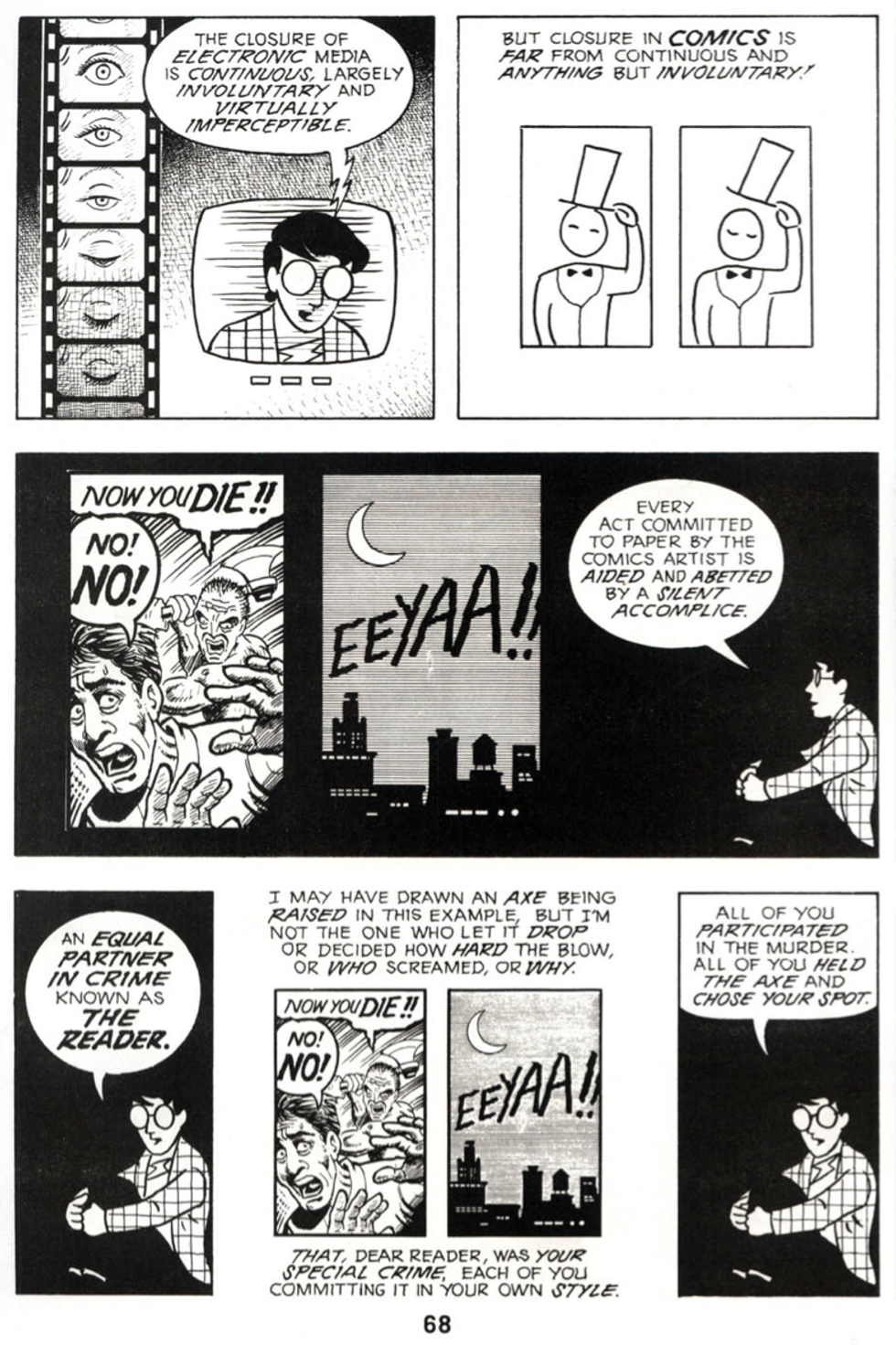Last semester, in spring of 2016, I took a course on superheroes. I briefly mentioned that I had an amazing experience thanks to a great professor in my last article, but the heart of this course was composed of content. It was composed of stories. These stories were comic books and graphic novels, and in reading them, I fell in love. In love with the form of the comic book, and the unique reading experience that made homework feel like leisure.
I’ve read manga ever since I was a kid. A series called Anima was one of my first when I was 10, so I guess I’ve always been open-minded when it comes to reading pictures and words. But because of the chance to read even more of these picture and word stories, I’ve found that it’s difficult to read anything except this form lately. Drawings pull you in, enlighten you through characters’ expressions and color. For yet another class I’m currently taking about graphic novels, we were required to read Scott McCloud’s Understanding Comics. This is, essentially, a comic book about how to appreciate comic books for the many elements that go into creation. The book is filled with interesting aspects about why comic books can pull you in, and how they involve readers.
One of the first things that’s eye opening in his work is that McCloud points out how we see ourselves in almost everything. Any shape with two dots and a line is a face. Any simply drawn characters become ourselves, our own consciousness. Any car that we drive in becomes an extension of ourselves. Through drawings on paper and even inanimate objects, we are enabled to become more than human. And this plays into one of the reasons why comic books are so amazing.
Not only do we find ourselves with racing hearts, as if we were inside the comic book, but there is also an element of filling in the gaps. The space between in comics, known as the gutter, is where readers use their imagination to get at what happens next. In a brilliant comparison, McCloud shows how even though film can be compared to comics, there’s less imagination used on viewers’ parts compared to when they view comics.
Allow me to show you a segment from McCloud’s work:
He follows this page with the words, “To kill a man between panels is to condemn him to a thousand deaths” (69). Pretty harsh, yet incredibly eye opening about the power of the comic book. Overall, though, this demonstration both points to reader involvement in comic books, and the fact that every person gets a different experience while reading. It’s pretty amazing.
Additionally, as comic books continue to develop over time, I hope that their popularity grows. No matter the personal preference of style, there is a style out there for everyone. More realistic, more cartoon, more abstract. Genres to appeal to every audience. If you want to have an artistic experience, and involvement that works across time and space, I highly recommend giving comic books a try. And if that panel I displayed piqued your interest, McCloud’s work is also a fascinating read about not only comic books, but on the philosophy of art.
Works Cited
McCloud, S. (1994). Understanding comics:. New York: HarperPerennial.




















